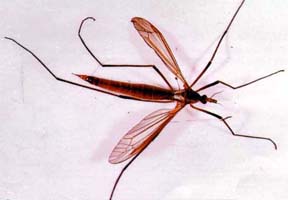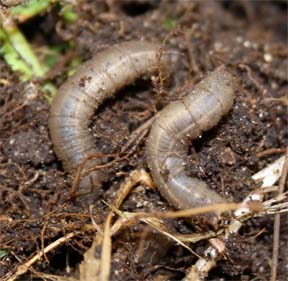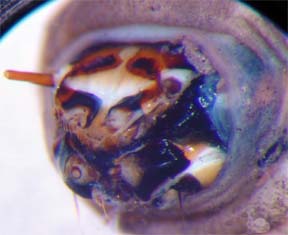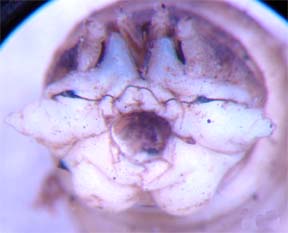European crane flies discovered in Waterford
Editor’s note: This article is from the archives of the MSU Crop Advisory Team Alerts. Check the label of any pesticide referenced to ensure your use is included.
A few weeks back a homeowner in Waterford (Oakland County) sent in some insect larvae that were crawling about his driveway in large numbers. I recognized the larvae as crane fly larvae (Tipulidae) and suspected they were European crane flies, Tipula paludosa.
I sent them off to Jim Zablotney, USDA/APHIS/PPQ, at the Detroit Metro Airport for confirmation. Jim informed me this week that USDA had confirmed my initial identification. Adult European crane flies have been found in Michigan during recent surveys but this is the first time the larvae have been found. The homeowner reported that his lawn has several dead areas and that his house and garage were covered with large mosquito-like insects during the fall of 2008. The European crane fly can be a serious pest of turf that threatens grass pastures, lawns, golf courses and sod farms. The larvae are also known to attack a wide range of vegetables and small fruit crops.
The European crane fly was identified in North America in 1955 in Nova Scotia. It was first found on the west coast in 1965 in British Columbia. Adults were collected in light traps in Washington in 1966. In the east, the fly was first identified in Ontario in 1998 and then in New York in 2004.
The larvae, known as leatherjackets, feed on underground plant parts during the day and will emerge to feed on stems and grass blades on damp warm nights. This feeding can cause patches of grass to die when numbers of leatherjackets reach around 50-80 per square foot. Damage to golf greens has been reported when birds peck out the larvae during the spring.
European crane fly adults emerge during late summer and early fall, typically shortly after sunset. The adults do not waste anytime milling about. They finish mating by midnight, and lay most of their eggs by dawn of the following morning. Eggs hatch in 11 to 15 days. The larvae are said to feed ravenously and usually complete the first two instars in less than two months. The larvae overwinter as third instars and begin to feed again as soon as temperatures warm in the spring. They stop feeding in mid-May and then remain inactive until they pupate towards the end of August. Adults appear shortly afterwards to begin the cycle anew. There is one generation per year.
The larvae are legless worms that taper slightly at both ends. They are light gray to greenish grey with irregular black spots. Their sclerotized head capsule is quite different from that of a caterpillar or sawfly larva. They have large fleshy lobes that surround two dark spiracular plates on their posterior ends.
Fun Fact: Tipulidae is the largest family of flies (Order Diptera) with 1,517 species in the US and Canada. Most larvae are aquatic or semi-aquatic. There are only four species of tipulids that are considered pests.



 Print
Print Email
Email






